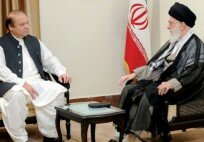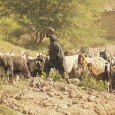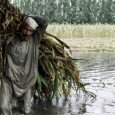By Afia Salam –
The rate of deforestation in Pakistan is the highest in the world. Unless this is reversed we will just be taking one step forward at any plantation drive
The rate of deforestation in Pakistan is the highest in the world. Unless this is reversed we will just be taking one step forward at any plantation drive
Spring is in the air, birds are chirping noisily, the animals are going berserk in the mating season, and the bare branches of trees are sprouting bright green leaves despite the belated snow flurries in Gilgit-Baltistan, Galiyat and parts of Balochistan, which delayed the changing of the season.
However, Nauroz was celebrated by all those who celebrate the advent of spring coinciding with the vernal equinox, so what better time to be feeling ‘green’ than now? But really, how green is our land? Other than the fact that three quarters of the flag is that colour, and that we go green whenever the Pakistan team takes to the cricket field, we are not in a position which would turn anyone else green with envy as far as plant cover is concerned! The worldwide recommendation for plant cover is 25% of all land area. We barely make it to 5%, and that is also contentious, since mere allocation of areas for forests do not constitute actual forests or make up for the abysmal figures.
However, that is the ground zero. How do we build up from it? What can be done to increase forest cover that will in turn reduce carbon emissions? This is a huge ask, and something that Pakistan has failed in despite the allocation of resources and the attendant hype each time the spring tree plantation campaigns start.
According to a leading forest expert, government departments are allocated targets. Airports around the country have a target, as do the National Highway Authority, and the provincial Forest departments. Some tackle their tree plantation with students via schools, others with community groups. However, the key is not the number of trees planted but a longer term involvement in their survival and nurturing.
Community based social forestry is a model that has proven to be a success in the Galiyat. Here fruit trees were given to community members under the Small Grants Fund of the Global environment Facility, and they were able to enhance their livelihood options. Ultimately that is what it all boils down to …. which trees to plant, where, and when?
Because of the huge gap between what exists and what is needed in terms of forest cover, Pakistanis have the opportunity to be creative in the ways in which they plant trees, for their personal as well as general environmental benefit. With Pakistan having secured the first grant through the REDD+ mechanism (Reducing Emissions through Deforestation and Degradation), there are greater opportunities for involving communities in reforestation drives.
Environmental experts cite the example of the trophy hunting programme that had incentivised conservation through community involvement. They say that if the benefits of the REDD+programme, and the opportunity to earn through carbon trading are implemented through community management, there is every likelihood of increasing the green cover. However, it will be a while before the understanding of both these concepts trickle down to the people, but it is good to see stakeholder dialogues starting to take place.
Maybe other provinces can follow the lead taken by the Khyber Pakhtunkhwa (KP), with the drafting of the Green Growth Policy by the former Minister of State for Environment, Malik Amin Aslam. The initiative has been internationally appreciated, and its details can be seen at http://www.greengrowthknowledge.org/blog/green-growth-initiative-%E2%80%93-vision-implementation
Gilgit-Baltistan has also seen a criminal depletion of its precious forest resources, and its people had to mount a campaign to try and put a stop to the activities of the timber mafia.
But what about the here and now? What can you and I do? How do we increase the tree cover? Simple…we plant trees! But then, mind you, there is a wrong way to do a right thing, and we have plenty of visible examples of that, such as the greening of Karachi through ‘conocarpus’ which is NOT an indigenous plant. Not only has it been planted excessively at the cost of local species, it has promoted a ‘mono-culture’ which all experts warn against as it hampers the flourishing of bio-diversity that comes with the growth of mixed species. This plant can now be seen across Sindh, and has also entered Punjab. Experts say that it is thankfully not an invasive species, since it has to be planted.
Agha Tahir Hussain, of the Sindh Forest Department says we have had our brush with exotic, foreign, as well as invasive species. The health hazard posed by the paper mulberry in Islamabad is a case in point. Other examples are the eucalyptus and the rapid spread of Mesquite which is known as dewi in Sindh; both proof of the short sighted approach adopted in the past.
Dr. Ejaz of WWF says Pakistan has 9 ecological zones each with its own peculiar vegetation. We have local plants with known benefits. These need to be promoted at an official level. The environmental NGOs and CBOs have been doing this on their own. A proper push for long term plans involving species that need to be promoted should be made, and that awareness should be tied to the availability of adequate stock in the nurseries.
At another level, even the promotion of kitchen gardening would be a step in the right direction, and it is heartening to see many small initiatives started by environment friendly individuals now being scaled up through schools. Kitchen gardening, especially on the roof is another initiative that needs to be promoted for a variety of reasons in tandem with rain water harvesting, to optimize the area under cultivation with minimal water usage. Organizations like Subhe Nau are busy promoting these methods in the Capital territories and these can easily be adopted elsewhere.
Citizen engagement, as well as overseeing in all such initiatives is a must. While making and breaking world records includes a feel good factor such as in the plantation of mangroves along Sindh’s coast, such measures should look beyond the project cycle. We have a long way to go to get to the 25% mark, but unless the rapid deforestation in Pakistan, the highest in the world, is reversed, we will just be taking one step forward, and two back, come spring, winter or any other plantation drive.
The writer is a journalist based in Karachi































































































